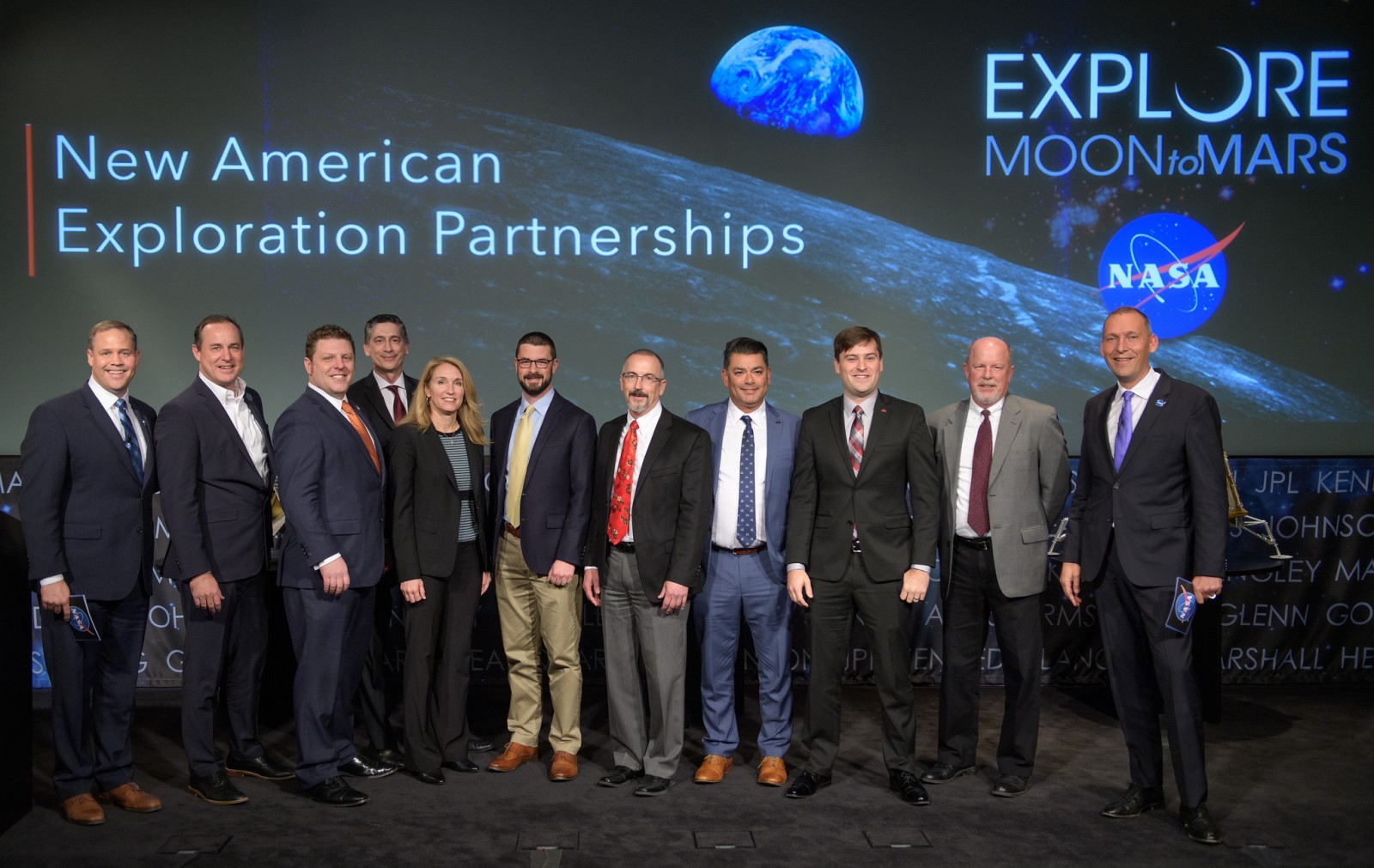9 US Companies Are Going to the Moon! Here Are NASA's New Partners.
NASA has selected the first batch of U.S. companies to join the agency on its journey to its next destination, the moon, which NASA wants to explore in order to prepare to go on to Mars.
During a public event held today (Nov. 29), the agency unveiled nine new partners that will be designing and building lunar landers aimed at facilitating scientific exploration of the moon. In addition to the specific companies chosen, NASA Administrator Jim Bridenstine also announced that the program running those contracts — the Commercial Lunar Payload Services program — is now part of the science section of NASA's bureaucracy, not the human exploration section.
The general idea is that these companies will be able to compete for contracts to deliver NASA science experiments to the surface of the moon by flying lunar landers on rocket launches purchased from other commercial space companies. Those individual contracts would substitute for NASA needing to build those capacities itself. [Building Apollo: Photos from Moonshot History]
But under this approach, NASA won't be alone in hiring these companies — the agency hopes to spur development that the commercial sector can also utilize. "We want to be first customers, not only customers," Thomas Zurbuchen, NASA's head of the science mission directorate, said during the event.
The agency did not provide any details about the choices beyond what the selected companies were: Astrobotic Technology Inc., Deep Space Systems, Draper, Firefly Aerospace Inc., Intuitive Machines LLC, Lockheed Martin Space, Masten Space Systems, Inc., Moon Express and Orbit Beyond.

When asked what information companies had to provide in order to participate in the program and how NASA chose the winners, Zurbuchen did not go into specifics. "We went with a really broad set of criteria," he said, adding that those criteria "ask questions about the overall liability of the companies, their likelihood to be able to deliver these services, but we did not go in very deep depth relative to the technical capability."
All told, NASA is planning for the Commercial Lunar Payload Services program as a whole to encompass contracts totalling up to $2.6 billion over the course of 10 years, although NASA spokesperson Cheryl Warner wrote in an email to Space.com that each company will receive at least $25,000 through the program, with the value of individual contracts varying in accordance with the service the company will provide.
Get the Space.com Newsletter
Breaking space news, the latest updates on rocket launches, skywatching events and more!
"These nine companies will bid on and be paid through task orders issued by NASA starting in the near future," Warner wrote. (The agency has said that it intends for the first flight to occur next year.) "Services they provide NASA will cover payload integration and operations, launch and landing on the Moon."
NASA has been working to encourage private interest in the moon as a way to reduce the agency's own costs as it looks to return to human exploration, first at the moon and then at Mars. That goal is meant to facilitate NASA's timeline of landing humans on the moon during the 2020s.
Email Meghan Bartels at mbartels@space.com or follow her @meghanbartels. Follow us @Spacedotcom and Facebook. Original article on Space.com.
Join our Space Forums to keep talking space on the latest missions, night sky and more! And if you have a news tip, correction or comment, let us know at: community@space.com.

Meghan is a senior writer at Space.com and has more than five years' experience as a science journalist based in New York City. She joined Space.com in July 2018, with previous writing published in outlets including Newsweek and Audubon. Meghan earned an MA in science journalism from New York University and a BA in classics from Georgetown University, and in her free time she enjoys reading and visiting museums. Follow her on Twitter at @meghanbartels.









